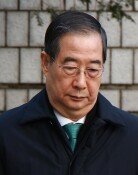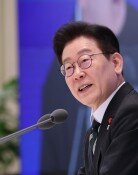[Editorial] Longer Missile Range Needed
[Editorial] Longer Missile Range Needed
Posted April. 07, 2009 08:50,
North Korea has increased its missile range by firing Taepodong-2 Sunday from that of its Taepodong-1 in 1998. Though the range cannot reach Alaska or Hawaii, the Taepodong-2 flew about 3,200 km before falling into the Pacific Ocean. The North will step up efforts to develop inter-continental ballistic missiles targeting the U.S. mainland through 2012, when it aims to establish itself as a powerful country. Coincidently, 2012 is the year when the South Korea-U.S. Combined Forces Command will be dissolved and Seoul will take over wartime operational command from Washington. The South cannot afford to relax just because the North has failed to put its satellite into orbit.
The North could also pursue a second nuclear test sooner rather than later. Pyongyang conducted an underground nuclear test in October 2006 soon after its failed Taepodong-1 launch in July that year. Even without the Taepodong-2, the North far exceeds the South in missile capability. Pyongyang holds 600 Scud B missiles and 200 Scud Cs with ranges of 300 to 500 kilometers. Pyongyang also has 200 Rodong missiles with a range of 1,300 kilometers able to hit Japan. The North also deployed in 2007 a new intermediate-range ballistic missile with a range of 3,000 kilometers that can threaten the U.S. territory of Guam.
In contrast, South Korea lags far behind North Korea in missile capability. The Hyunmu missile developed by Seoul using homegrown technology has a range of only 250 kilometers. The Souths Army Tactical Missile System (ATACMS) missiles introduced from the United States can reach only about 300 kilometers. This is because Seoul must follow a bilateral missile treaty with Washington. And this is an extension from 180 to 300 kilometers through a renegotiation of the treaty following Pyongyangs test-firing of the Taepodong-1 in 1998. Hence, calls for a further revision of the treaty following Sundays launch of the Taepodong-2 is increasingly gaining ground.
Another restriction is the missile technology control regime initiated by the United States in 1987. The regime aims to prevent the proliferation of missiles capable of carrying nuclear warheads weighing 500 kilograms or more to a distance of more than 300 kilometers.
Whether a country will follow the guidelines depends on domestic law, but the restriction is impractical for South Korea. Experts say Seoul needs missiles with a range of at least 550 kilometers, which will allow the South to cover all of North Korea. A cruise missile under development by the South to possess a range of more than 1,000 kilometers is a weapon that can precisely attack the North while dodging the weight restriction.
Seoul must support the missiles development to speed up its completion. An immediate task is to expand the missile capability of the Combined Forces Command, including the deployment of additional Patriot missiles by U.S. troops stationed in the South, and the loading of SM-3 missiles in the Korean Aegis destroyer King Sejong the Great. If the South neglects the Norths ballistic missile development, a major disruption could ensue in the deployment to the Korean Peninsula of additional U.S. forces mobilized from the U.S. mainland and Guam, and in South Korea-U.S. joint military operations in the event of war.







